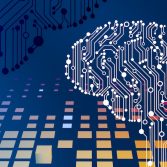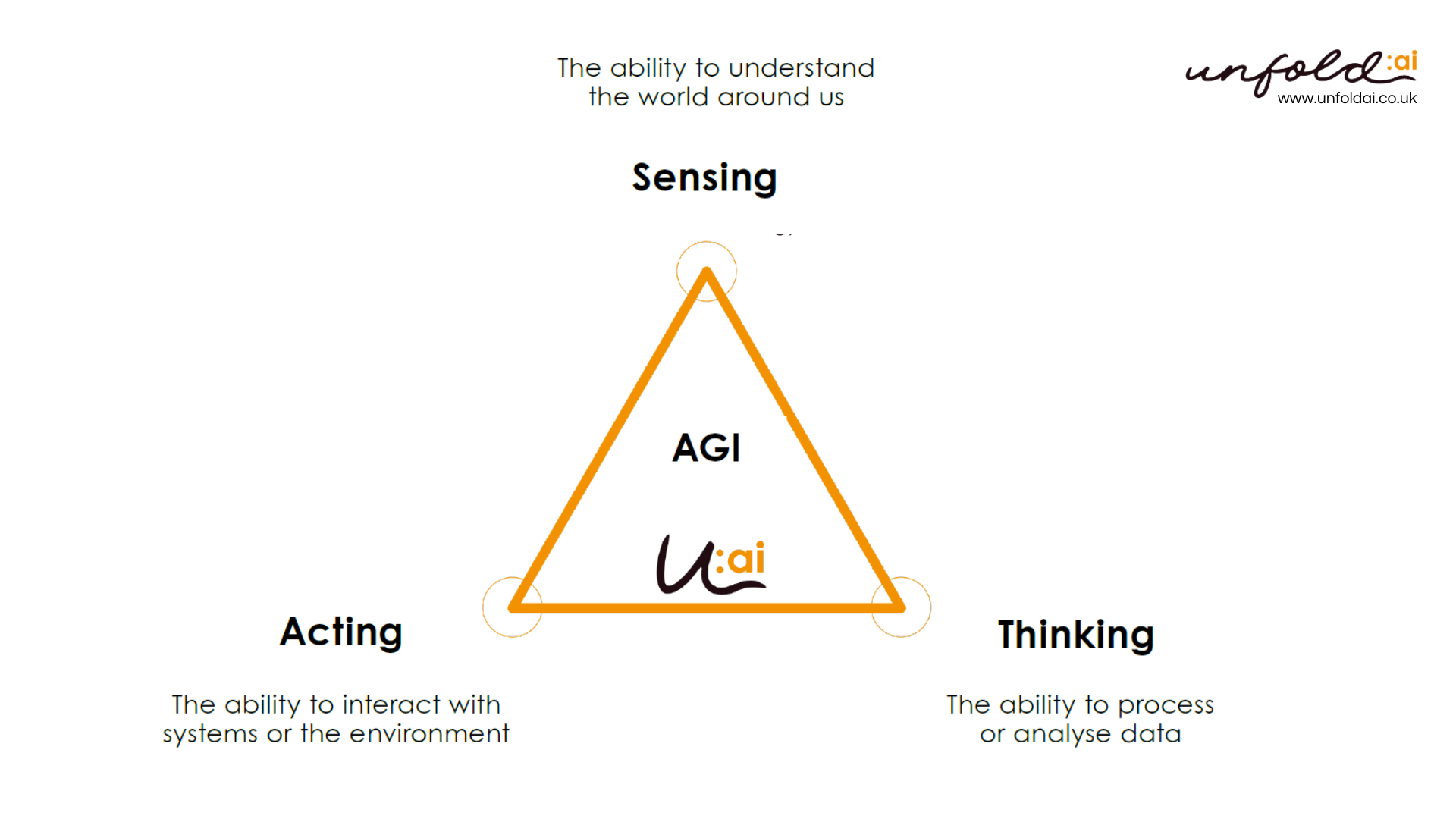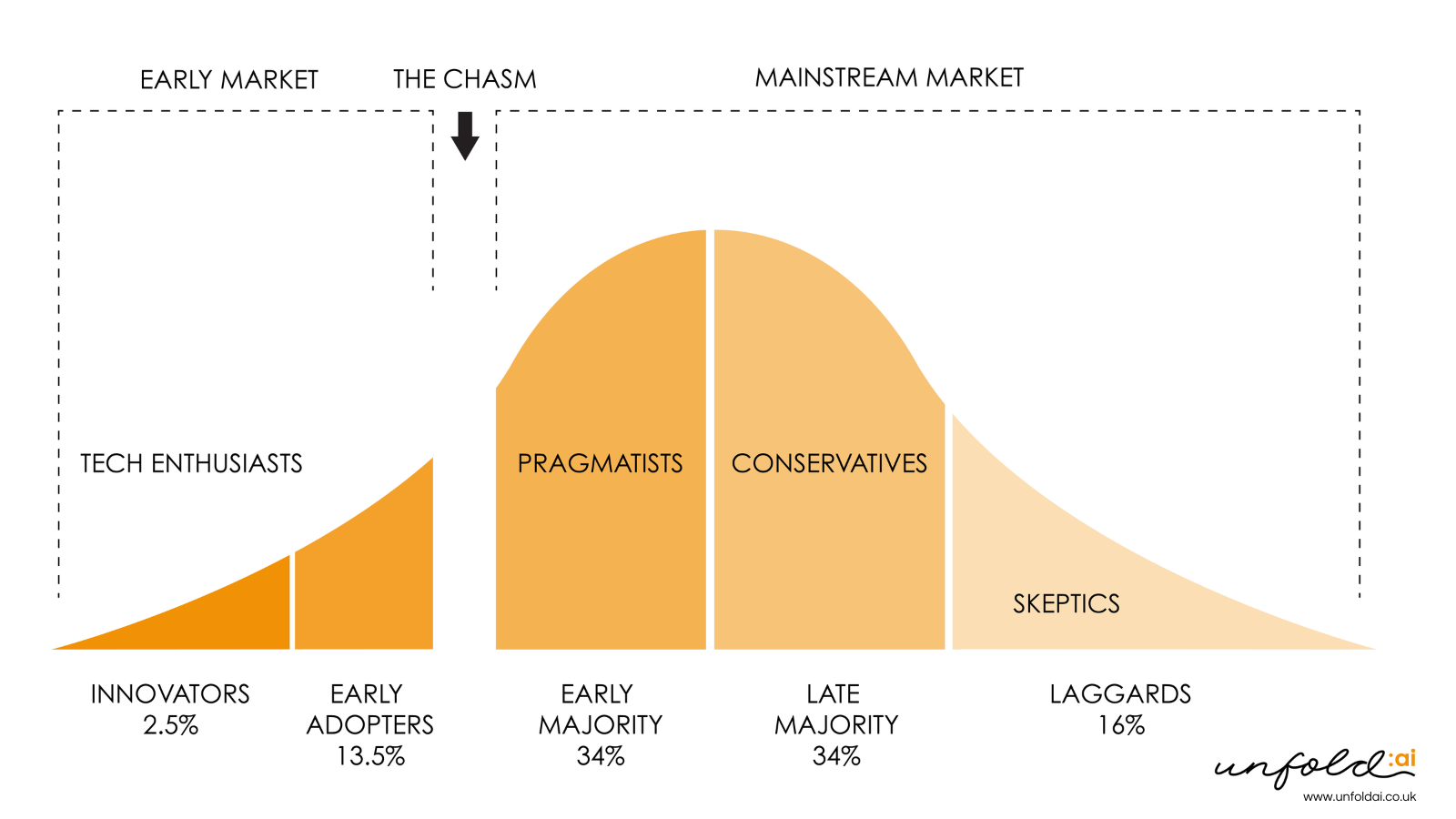Main Content

03/10/2023
Unfolding the impact of AI on Design
By Paul Bratcher and Kate Shepherd, co-founders of Unfold:AI
Since May 2023, products like chatGPT and Midjourney have catapulted Artificial Intelligence into mainstream discourse. There are few topics more divisive than AI and conversations currently range from its potential to revolutionise our world, to fears of dystopian outcomes with killer robots.
And yet even the launch of the Apple Mac, social media and the iPhone will not come close to the impact of AI on your business, people and society.
At Unfold:AI, we simplify the AI landscape using a straightforward model, categorising it into three essential types.

Sensing – AI that performs, or understands the input from the real world, such as computer vision, data reading, temperature gauges (this is the software that when you search for images on your phone, recognises your cat!).
Thinking – AI that performs decision making, transformation, translation or language processing, this includes chatGPT, Siri, Alexa.
Acting – AI which is capable of interacting with something else, robotics, processes or other computer systems.
Often an ‘AI’ solution will combine elements of each of these three domains.
The Pace of AI Adoption
The last change of this magnitude was probably the launch of Windows and Word in 1984, or the introduction of steam into mill production. The difference this time is the pace of adoption.
Let’s consider the adoption of AI, compared to a model such as Rogers Innovation Curve.

Currently, we’re in the ‘Early Adopters’ phase, with approximately 2 million chatGPT users in the UK – just a fraction of the 28-million-strong workforce. It’s likely that by the end of Q1 2024 the adoption rate will have moved to ‘Early Majority’.
By the end of 2025, we will be at the start of ‘Late Majority’ and by 2028 we will be in laggards.
So, about five years from innovation to maturity. This is really fast. For comparison, the digital transformation took about 20 years, and according to McKinsey only 12% of companies have declared that they achieved all the objectives of that transformation.
“AI's just a trend, right?"
“It’s in Photoshop, so what more is there for design agencies to do?”
Recent research suggests a significant part of the workforce will be impacted by AI, as non-routine tasks (typically knowledge workers) can now have activities automated and augmented.
As much as 85% of all of these roles could be improved by up to 50% (World Economic Forum, 2023). Rapidly adopting AI is going to provide competitive edge within organisations, and allow for previously un-economic but valuable projects to now be achieved. The net end position is that a greater number of jobs, of better value, of greater productivity and improved satisfaction to do, will be created.
To sum it up, AI could handle the equivalent of two workdays per week in the near future. The real challenge lies in strategically delegating tasks to AI – those you either don’t want to perform or that AI excels at.
It’s likely founders and leaders in the design industry are currently really intrigued (and perhaps even a little concerned) about how AI will impact on design teams and agencies, and the design process as a whole.
“That’s okay, AI can’t do ‘creative thinking’. Humans are better at that”.
Repeatedly AI has proven to be excellent at starting the ideation process, or helping people get ‘off the blank page’, but not for the whole creative activity. The key to maximising the potential of AI is in taking a ‘Human + AI’ approach; an augmentation process to generate AI powered super humans, if you like.
Taking a ‘Human + AI’ approach
Let’s consider some of the typical day-to-day activities of a design team/agency, and the different ways AI has the potential to help across these areas:
Creative Ideation: We all believe this is the majority of our activity. But in raw time and effort, is it? It’s certainly an area where each agency provides its unique business DNA, and it’s also the area where AI will support and allow greater options. However, it’s probably the least impactful place for AI within an agency day-to-day.
Asset Production: Having creatively ideated, AI has the potential to assist in creating variations, enabling the rapid re-working of concepts and the creation of additional assets. This is probably the main area of work in the ‘creative’ teams by hour of activity. In this space you will find an explosion of AI tooling in existing workflows, such as Adobe. There are emerging solutions which can lead to further productivity gains. Particularly emerging AI, such as translation, multi-lingual, video editing, video style transferal. This is a key area for AI exploration.
Execution: The execution of activity, campaigns, social media posts, short form content, and the re-purpose of assets for other channels. This is an area where AI will be highly impactful. It is highly process orientated, predictive, data driven. The core strengths of AI when combined with any form of tooling from the ‘Act’ segment of AI.
Administration: The day-to-day running of the agency, including email follow up, calendar management, staff reviews, expenses management. This is an area where AI will definitely be available to help, particularly as the cost to automate and build some of these tools is lowering every day. They will also be baked into tools like ‘hubspot’, ‘xero’, and other common administration systems. Just watch that the licence fees on things like ‘co-pilots’ don’t escalate for you, versus the proven measured productivity gains.
Helping people to help themselves
In addition to segments of activity like these, you need to consider the implication of AI helping people to ‘Act Upwards’. For example, helping less experienced people to do the work of more experienced (40% gain in capabilities and quality). If you are the most experienced (17% gain in output quality) if you work at your own level.
So, what is stopping you from ‘acting upwards’, and lifting the bar of what can be done?
It’s our belief that there are two big challenges:
The Talent Gap in AI Expertise: As of now, AI experts are a rare breed; research suggests that less than 10% of the workforce has in-depth AI experience in a commercial setting. Premiums on salary of circa 20% are already appearing in the job marketplace.
If 80% of your workforce could be made 40% more efficient, this is the challenge you should be considering as a priority. Greater productivity, reduces operational costs, and increases profitability. How are you going to reskill, retrain, upskill yourself, your team, your organisation?
The Challenge of Time-Based Billing: Customers may start questioning, “If AI can do this, why am I being billed so much? I could probably do it cheaper myself.”
It’s time to do the difficult pivot, as rate cards are likely going to become a legacy activity, or at best a race to lowest cost.
Agencies need to modernise to be based on ‘product’ and ‘outcome’, rather than billed hours per job.
The challenge on how to do this will be unique to every organisation, but requires thought today.
If you consider leaders in this will outperform laggards by 35% within 36 months (World Economic Forum, 2023), can you afford to not start on the most impactful generational change in technology?
Start now.

About: Kate Shepherd and Paul Bratcher, co-founders, Unfold:AI
Kate is an acknowledged expert in design thinking, future forecasting, digital and design innovation who has strategically led award-winning design teams for companies around the globe.
Paul is recognised as an industry leader in achieving digital transformation in enterprises from scale up, FTSE 100 and skunkworks.
Unfold:AI can help your design agency to harness the positive possibilities of AI, with tailored upskilling courses and support.
If you would like to know more, contact: kate@unfoldai.co.uk



